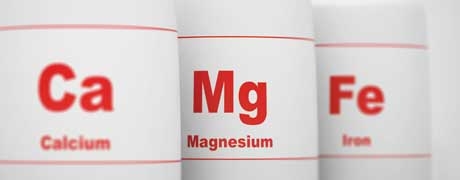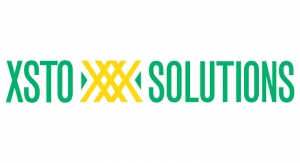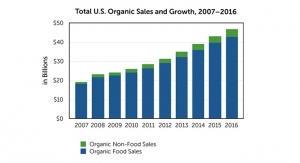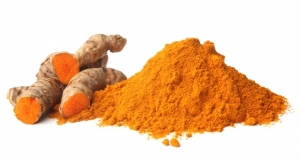Lisa Olivo, Associate Editor01.05.15
Mainstays in the nutraceuticals market, minerals deliver clinically backed solutions for consumers looking to safeguard their health.
Gameil Fouad, PhD, president of Biotron Laboratories, Inc., Centerville, UT, referred to minerals as “the bedrock of the supplement industry,” and predicted the category will remain robust in the future.
“Minerals are nutritionally essential and must come from the diet as they cannot be produced by the body from other basic building blocks,” he explained. “Similarly, for some minerals—like calcium and magnesium—achieving the recommended intakes from diet alone is difficult for many individuals.”
The Council for Responsible Nutrition’s 2014 Consumer Survey on Dietary Supplements found the vitamins and minerals segment was the highest performing supplement category, compared to specialty supplements, herbs/botanicals and sports nutrition/weight management. According to the survey, 98% of Baby Boomers who use supplements reported taking vitamins and minerals; 95% of Generation Y, 95% of Generation X and 97% of Elder users also reported vitamin and mineral usage.
Overall, 24% of users reported taking calcium in the last 12 months, with 10% taking magnesium and 8% taking iron.
Euromonitor International reported the global mineral supplements market has remained steady in recent years, hovering around $3.6 billion. The U.S. saw modest growth, with $1.09 billion in 2011 climbing to $1.15 billion in 2013. Data included sales of iron, zinc, phosphorous, potassium, chromium, cobalt, copper, iodine, fluoride, manganese, selenium, sulfur, sodium and magnesium, but excluded certain calcium supplements and electrolyte formulations.
Paul Dijkstra, CEO, InterHealth Nutraceuticals, Benicia, CA, suggested that “mineral growth will remain virtually on par with the dietary supplement market at-large.” However, shifts in calcium pricing, raw material supply and negative research findings could impact growth projections.
Still, he believes minerals bring value to any finished product. “Even in today’s economy, it is important to remember that price is not the only factor that is driving consumer purchases right now.” Focus on health, quality ingredients and unique delivery formats offer promise for the minerals market moving forward.
Challenges for Calcium
Negative headlines surrounding supplementation with calcium have impacted sales of what’s still considered the most popular and recognizable mineral supplement among consumers today.
“There certainly has been controversy surrounding calcium in the past year or two,” noted Biotron’s Dr. Fouad. Referencing a study published in the British Medical Journal in 2013, he pointed to results that linked calcium to increased risk of mortality from heart disease in women. Additionally, the research showed that women who took dietary supplements with calcium had higher death rates overall.
Adding to this bad press, a 2013 study in JAMA Internal Medicine suggested a high intake of supplemental calcium was associated with an increased risk of cardiovascular disease deaths among men, but not women.
Countering these reports, Dr. Fouad referenced a double-blind, placebo-controlled trial from the Women’s Health Initiative (2012), which examined 36,282 post-menopausal women and “found no increased risk of coronary heart disease, heart attack, stroke, overall CHD, colorectal cancer or total mortality, and hints at evidence of a slight protective effect against breast cancer and a reduction in hip fracture.”
Moreover, Dr. Fouad said the Institute of Medicine acknowledges a clear need for calcium with vitamin D to protect bone health. “Our position,” Dr. Fouad said, “is to recommend calcium in products designed specifically for pre-menopausal women, particularly those adolescents and young adults in peak bone building years. It is this group who is most likely to benefit from a highly bioavailable form of calcium and this population tends to have less calcium intake generally than recommended.”
Despite calcium’s nutritional importance, headlines have impacted consumer confidence. According to Nutrition Business Journal (NBJ), between 2012 and 2013, sales of calcium supplements fell 2.2% to about $1.17 billion.
A survey from Consumerlab.com, White Plains, NY, in February 2014 found that 42.1% of supplement users reported taking calcium—down 6.3 percentage points from the previous year, fueled by slumping sales among women (57.8% female calcium users dropped to 45.6%).
Product marketers are responding by focusing on consumer education about proper supplementation from high quality, bioavailable sources.
Nena Dockery, technical manager for Stratum Nutrition/ESM Technologies, St. Charles, MO, said consumer preferences for safe and effective ingredients are driving new sources of calcium. “Taking into account a variety of factors including naturalness, heavy metal content, absorbability and efficacy, eggshell calcium (ESC) and calcium citrate continue to provide examples of effective and safe sources for calcium. ESC brand eggshell calcium is ultra-pure and has extremely low heavy metals, far surpassing Prop 65 standards for heavy metal content.”
In addition, she said ESC contains transport proteins as well as trace minerals, “making it an advanced ingredient for use in bone health supplements and multivitamins, as well as other functional food delivery formats where calcium is needed.”
Sue Finderup, product manager for Waitaki Biosciences, Christchurch, New Zealand, said the negative calcium studies indicate a problem with some supplements providing more nutrients than the body can handle. “We think there is a clear need to rethink the meaning and importance of ‘bioavailability’ as it relates to minerals—and in fact all supplements. It is industry nonsense that the faster you can find something in your blood after ingestion the more effective it is. What ultimately matters is the biological effect—something which needs to be supported by robust clinical work.”
Waitaki has developed StimuCal, a patent-pending, concentrated source of natural calcium with bone-stimulating protein. Tested in an independently designed, randomized, placebo-controlled trial of 100 post-menopausal women conducted by the Department of Medicine at the University of Auckland, StimuCal was found to produce lower peak blood calcium levels than either calcium carbonate or calcium citrate, while maintaining an identical effect on markers of bone turnover.
Max Motyka, MS, RPh, director of sales and marketing, Albion Human Nutrition, St. Clair Shores, MI, discussed research that indicated calcium’s importance for bone mineral density (BMD) in young children [Bone Mineral Density in Nigerian Children after Discontinuation of Calcium Supplementation Bone; 2013 Jul; 55(1):64-8. Umaretiya PJ, et al.].
In the study, Nigerian toddlers aged 12-18 months from three communities were enrolled in a controlled trial of calcium supplementation, with two communities receiving daily calcium supplements—one receiving calcium carbonate (400 mg), and the other as ground fish (529 ± 109 mg)—for a duration of 18 months. All three communities received vitamin A (2,500 IU daily) as placebo. Mr. Motyka explained, “During the 18 months of supplementation, an adjusted model demonstrated that the increase in both distal and proximal forearm BMD over time was significantly greater in the calcium-supplemented groups than in the placebo group (P<0.04). However, after supplement withdrawal, the increase in BMD over time was largely attenuated and only remained significant at the proximal forearm in the ground fish group (P=0.03). The benefit of calcium supplementation on forearm BMD in young Nigerian children is not sustained after supplement withdrawal.” Results suggest the need for proper mineral nutrition in childhood development on a sustained level.
Magnesium Goes Mainstream
Magnesium, the second most popular mineral supplement in the market, stands out as an ingredient poised for significant growth. Its role in supporting calcium absorption makes it a noteworthy player in the bone health market, but new research has indicated its importance for “mental health, diabetes, relaxation and sports nutrition, among many others,” explained Rocio Aramburo, market development manager, Health & Nutrition, Jungbunzlauer Inc., Newton Center, MA.
“Magnesium is the fourth most abundant mineral in the human body and the great physiological importance of magnesium results from its involvement in a large variety of biological functions, its intervention in enzymatic reactions (>300 enzymes) and its role in membrane function and neuromuscular excitability,” she said.
Ms. Aramburo also explained that the European Food Safety Authority (EFSA) recently approved magnesium health claims (in addition to 37 health claims for other minerals such as calcium, potassium and zinc) that affirm the mineral’s benefits for bone health, psychological function, muscle function and reduction of tiredness and fatigue. Ms. Aramburo speculated that European authorization could expose more consumers to the importance of magnesium. “These health benefits can be clearly defined and are easy for the consumer to understand. Even if the EU regulations are not valid outside Europe, they influence other regions in the world because they represent the first comprehensive evaluation of health claims, while the respective dossiers can be used by other authorities as well.”
NBJ reported sales for magnesium have grown from $435 million in 2011, to $583 million in 2013. According to Sloan Trends, Inc., Escondido, CA, magnesium will be among the fastest growing supplements through 2016; NBJ forecasted it will reach $679 million in 2014, and up to $874 million by 2016.
Patrick Stano, vice president of sales & marketing, North America, Dr. Paul Lohmann, Islandia, NY, reported a particular interest in magnesium salts among the company’s customers. “Magnesium helps contribute to electrolyte balance, muscle function, protein synthesis, reduction of fatigue and the maintenance of teeth and bone health,” he said.
Ms. Dockery of Stratum/ESM noted that while magnesium is most commonly known as an important mineral for bone health, new research has shown it to be beneficial for those with diabetes. “The significance relates to the magnesium depletion caused by insulin resistance. Those individuals with higher blood levels of magnesium are less likely to be diabetic. The caveat is that supplementation with normal doses has limited effectiveness, so magnesium might help as a preventive measure; but as a ‘treatment,’ the supplementation would need to be in doctor-prescribed therapeutic amounts,” she noted.
Albion’s Mr. Motyka highlighted research linking magnesium to mood and emotional well-being. He said that while “mechanisms of the antidepressant action of magnesium are not yet fully understood, magnesium influences several systems associated with the development of depression. The first information on the beneficial effect of magnesium sulfate given hypodermically to patients with agitated depression was published almost 100 years ago.”
A 2012 study in Neuropharmacology (Sartori SB, et al.) investigated previous evidence that magnesium had an effect on mood, emotions and reactions to stress. Mr. Motyka explained that researchers conducting the trial “observed that magnesium deficiency caused an increase in the transcription of the corticotropin-releasing hormone in the periventricular hypothalamic nucleus and elevated ACTH plasma levels. This indicates an enhanced set point in the HPA axis. They saw that this dysregulation of the HPA axis could contribute to hyper-emotionality as a response to dietary induced hypomagnesemia.”
Zinc: Beyond Immune Health
Touting benefits for immunity, as well as bone health, cognitive function and healthy vision, zinc continues to gain prominence.
Mr. Motyka said many investigations surrounding zinc’s impact on the immune system have indicated its role is multifaceted, demonstrating that “zinc has a wide range of different roles in immunity.”
“Zinc is a cofactor in several biochemical reactions in the body and serves several important functions related to immune health. Research in this area is also ongoing,” said Ms. Dockery. However, more recent research studying zinc relates to mental and psychiatric health, she noted.
For example, Mr. Motyka cited a 2011 study published in the Journal of Child and Adolescent Psychopharmacology that examined if zinc supplementation could benefit children with attention-deficit/hyperactivity disorder (ADHD). The study tested if zinc supplementation could improve inattention and reduce the use of amphetamine in treating the disorder. Researchers found that 30 mg/day zinc reduced the optimal dosage of amphetamine by 37% in test subjects after 8 weeks of supplementation.
Despite limitations in the study, Mr. Motyka said this result merits further research. “Given the concerns about long-term stimulant exposure, such a reduction could contribute immensely to public health. The principle has already been established for behavioral treatment, which can reduce the dose of stimulant required for a given effect, but is more expensive, difficult, and not readily available to all. If zinc could accomplish the reduction of stimulant dose, it would be cheaper, easier and available to almost everyone.”
He went on to note the importance of zinc for growing children, explaining that deficiency can potentially cause growth defects. “Extremely low birth weight (ELBW) infants with chronic lung disease (CLD) suffer from growth failure and are at risk of zinc deficiency. Zinc supplementation improved growth in ELBW infants on human milk with CLD. Further investigation is warranted to re-evaluate zinc requirements, markers and balance [J Pediatr Gastroenterol Nutr; 2013 Oct 9. Shaikhkhalil AK, et al.].”
Jungbunzlauer’s Ms. Aramburo said zinc is becoming “more popular among consumers as impairment of intestinal zinc absorption results in severe clinical manifestations like skin lesions, developmental problems, stunted growth and immune deficiency. Its importance for human health was emphasized by the European health claim regulation, where zinc received more positive opinions (18 in total) than any other mineral.”
Sales of zinc supplements reached $102 million in 2013, up from $85 million in 2011, according to NBJ.
Iron, Potassium, Chromium & More
Numerous other minerals play a key role in supporting public health. NBJ reported iron supplements earned $344 million in 2013, potassium $100 million, chromium $98 million and selenium $65 million.
Science supports the use of iron for energy and stamina, as well as cognitive development in children, metabolism and immune health.
Clinical studies with one of Albion’s flagship products, Ferrochel (ferrous bisglycinate—iron amino acid chelate) have shown Ferrochel improves hemoglobin and ferritin indices at lower dosages than ferrous sulfate or ferrous ascorbate. Lower dosages mean fewer side effects and no interactions with other nutrients, according to the company. “One such study at the Latin American Center for Nutrition and Metabolic Studies in Antigua, Guatemala, found infants with iron-deficiency anemia given Ferrochel had significant increases in both hemoglobin and plasma ferritin; researchers concluded it was the ‘iron of choice’ for its high bioavailability and good regulation,” noted Mr. Motyka [Nutrition, 17, 5:381-4, 2001].
Sloan Trends, Inc. specifically singled out potassium for its growth potential in the supplement market. The electrolyte, which supports the function of cells, tissues and organs, is important for indication areas such as heart health, skeletal and muscular function and digestive health, among others. However, the 2010 Dietary Guidelines reported the vast majority of the U.S. population is deficient in the mineral, indicating a large consumer need.
A popular supplement for blood sugar control, chromium is also gaining recognition. InterHealth’s Mr. Dijkstra suggested the use of convenient delivery systems such as bars, shots and powders utilizing chromium have helped its popularity.
InterHealth produces Zychrome (chromium dinicocysteinate), a complex of niacin, L-cysteine and chromium that has been shown to support healthy insulin control. A randomized, double-blind, placebo-controlled trial found that Zychrome modulated insulin function and healthy insulin levels trending toward normal range compared to baseline, Mr. Dijkstra explained.
“Selenium and cancer, chromium and diabetes, iron and anemia and zinc and immunity continue to resonate with our customers,” noted Sam Wright IV, CEO, The Wright Group, Crowley, LA. “Trace elements such as molybdenum, vanadium, boron and strontium show much growth promise in coming years as the science develops.”
Ms. Dockery also noted growth for various trace minerals thanks to “an increase in the research targeting the benefits of the individual minerals and mineral blends.”
Delivery Trends & Challenges
Consumers today are increasingly interested in novel delivery formats, ranging from functional foods and beverages to gummies, sachets, liquids, chewable tablets and more. “The fact that minerals are simple molecules, well-established in consumers’ minds and well-studied from a scientific standpoint,” makes them an obvious choice for fortified foods, beverages and supplements, said Mr. Wright.
“We’ve certainly seen an uptick in gummy production which is a tasty and efficient delivery vehicle for minerals. Dairy-based products like yogurt also offer a consumer friendly option,” observed Dan Murray, vice president of business development, Xsto Solutions, Morristown, NJ.
Dr. Paul Lohmann is experiencing increased demand for soluble minerals for powdered beverages and liquid supplements, according to the company’s Mr. Stano. “To meet this requirement, we are offering more products as ‘micronized’ grades,” which he said provide a better mouth-feel in liquid applications and stay in suspension longer than regular powder grades.
“Breakfast bars and other foods are increasingly more likely to contain added minerals and many are targeted to certain demographics, such as for sports benefits,” noted Ms. Dockery.
Despite consumer acceptance for functional foods with minerals, taste is a top priority for shoppers, and some minerals are notorious for their unpleasant flavor profile.
Iron particularly struggles with flavor, according to Mr. Motyka. To get around this issue, Albion developed Iron Taste-Free, a patented ferric glycinate ingredient that allows for more applications in situations where flavor, or lack thereof, is important. “Iron Taste-Free is flavorless and may be used effectively in certain foods, beverages, chewable tablets and even pediatric suspensions.” The flavorless profile of the ingredient doesn’t affect bioavailablty, he noted, thanks to extensive research and development.
Some minerals can also cause gastrointestinal distress, leading to formulation and consumer compliance challenges. Mr. Motyka stressed that “inorganic sources of minerals can cause irritation of the gastrointestinal tract or even toxicity with larger doses. Supplementing diets with inorganic minerals also causes mineral interactions, which suppress rates of absorption.” Albion’s minerals are chelated with amino acids, providing for greater bioavailability and less irritation, he said. “Albion’s pharmaceutical-grade amino acid chelates used in mineral supplements and food fortification provide the greatest chance to absorb minerals for their best biological advantage.”
Solabia, Cedex, France, has also explored unique methods to make minerals more bioavailable, and found success with mineral salts. “Bioavailability seems to be linked to the carrier of the mineral. With an organic carrier, the minerals are more soluble and more bioavailable,” said Laurent Lassalle, marketing manager for the company. Solabia developed a range of mineral salts—“The Pidolates”—that use pidolic acid as an organic carrier for minerals. Pidolates, Mr. Lassalle said, are very soluble, well tolerated and highly bioavailable. “Pidolic acid is a molecule naturally present in the body and so it is well tolerated. It is a physiological molecule present in several organs such as the brain, blood and epidermis. As a biochemical and metabolic intermediate, it takes place in numerous biological mechanisms.”
The Wright Group uses a microencapsulation technology, SuperCoat, to help minerals and other ingredients “play well with others” in nutrient systems, Mr. Wright stated. “Our SuperCoat microencapsulation technology enables our clients to apply minerals in foods, beverages and supplements while enhancing stability, preventing ingredient interactions and masking unpleasant flavor notes.”
Future Mineral Fortification
When asked about the next step for the minerals market, experts agreed that condition-specific supplementation will be the wave of the future.
Irene Bi, product launch analytics researcher with London-based Datamonitor Consumer, said condition-specific supplementation is the future for all dietary supplements, not just minerals. The problem though, she added, is a lack of understanding among consumers as to how minerals can benefit their health. “By using function-specific marketing, companies can better target their audience,” Ms. Bi stated. She suggested social media, apps and QR codes on packaging could be helpful to shoppers trying to learn which ingredients may be most beneficial. “This allows them to be better informed over the counter with objective advice. I believe this method will drive the growth of single-mineral supplements.”
Mr. Murray of Xsto Solutions predicted that continued research will add to the future popularity of condition-specific products. “I think we will see more options for mineral supplementation and looking forward, the ‘deeper dives’ into research will point to how specific minerals or combinations of minerals will affect health and disease conditions. It’s amazing that such tiny amounts of these trace and micro minerals can have such significant impacts on metabolism and health.”
Ms. Aramburo echoed this perspective, stating, “Many studies have been published that relate to a specific mineral with a particular health benefit and manufacturers are expected to use this scientific information in order to create new supplements.”
The aging population in particular would be a good target demographic for condition focused products, according to Mr. Wright.
Ms. Dockery noted, “We are already aware of specific vitamins and minerals combined for energy or sports applications, or to meet the needs of pregnant women. Judging from the increase in published studies, we might soon see precise combinations labeled to help maintain blood sugar levels or to support mental health.”
Biotron’s Dr. Fouad, however, questioned how personalized products can really be given the current regulatory framework. “To properly execute such a system it seems as though two sets of information are required: 1) the hereditary and behavioral risk factors as well as current nutrient status of any given individual and 2) a means whereby a custom product can be produced in a cost effective manner to target these risk factors. It’s unclear to me how this aligns with current GMP requirements—particularly from a testing point of view—and can still be economically viable. I think a more realistic approach is to create baskets of products that can be recommended to individuals with specific health concern, which in effect would be a more sophisticated version of the marketplace we have now. True personalization seems a lofty goal but it’s hard to imagine a clear path forward in the present environment.”
Gameil Fouad, PhD, president of Biotron Laboratories, Inc., Centerville, UT, referred to minerals as “the bedrock of the supplement industry,” and predicted the category will remain robust in the future.
“Minerals are nutritionally essential and must come from the diet as they cannot be produced by the body from other basic building blocks,” he explained. “Similarly, for some minerals—like calcium and magnesium—achieving the recommended intakes from diet alone is difficult for many individuals.”
The Council for Responsible Nutrition’s 2014 Consumer Survey on Dietary Supplements found the vitamins and minerals segment was the highest performing supplement category, compared to specialty supplements, herbs/botanicals and sports nutrition/weight management. According to the survey, 98% of Baby Boomers who use supplements reported taking vitamins and minerals; 95% of Generation Y, 95% of Generation X and 97% of Elder users also reported vitamin and mineral usage.
Overall, 24% of users reported taking calcium in the last 12 months, with 10% taking magnesium and 8% taking iron.
Euromonitor International reported the global mineral supplements market has remained steady in recent years, hovering around $3.6 billion. The U.S. saw modest growth, with $1.09 billion in 2011 climbing to $1.15 billion in 2013. Data included sales of iron, zinc, phosphorous, potassium, chromium, cobalt, copper, iodine, fluoride, manganese, selenium, sulfur, sodium and magnesium, but excluded certain calcium supplements and electrolyte formulations.
Paul Dijkstra, CEO, InterHealth Nutraceuticals, Benicia, CA, suggested that “mineral growth will remain virtually on par with the dietary supplement market at-large.” However, shifts in calcium pricing, raw material supply and negative research findings could impact growth projections.
Still, he believes minerals bring value to any finished product. “Even in today’s economy, it is important to remember that price is not the only factor that is driving consumer purchases right now.” Focus on health, quality ingredients and unique delivery formats offer promise for the minerals market moving forward.
Challenges for Calcium
Negative headlines surrounding supplementation with calcium have impacted sales of what’s still considered the most popular and recognizable mineral supplement among consumers today.
“There certainly has been controversy surrounding calcium in the past year or two,” noted Biotron’s Dr. Fouad. Referencing a study published in the British Medical Journal in 2013, he pointed to results that linked calcium to increased risk of mortality from heart disease in women. Additionally, the research showed that women who took dietary supplements with calcium had higher death rates overall.
Adding to this bad press, a 2013 study in JAMA Internal Medicine suggested a high intake of supplemental calcium was associated with an increased risk of cardiovascular disease deaths among men, but not women.
Countering these reports, Dr. Fouad referenced a double-blind, placebo-controlled trial from the Women’s Health Initiative (2012), which examined 36,282 post-menopausal women and “found no increased risk of coronary heart disease, heart attack, stroke, overall CHD, colorectal cancer or total mortality, and hints at evidence of a slight protective effect against breast cancer and a reduction in hip fracture.”
Moreover, Dr. Fouad said the Institute of Medicine acknowledges a clear need for calcium with vitamin D to protect bone health. “Our position,” Dr. Fouad said, “is to recommend calcium in products designed specifically for pre-menopausal women, particularly those adolescents and young adults in peak bone building years. It is this group who is most likely to benefit from a highly bioavailable form of calcium and this population tends to have less calcium intake generally than recommended.”
Despite calcium’s nutritional importance, headlines have impacted consumer confidence. According to Nutrition Business Journal (NBJ), between 2012 and 2013, sales of calcium supplements fell 2.2% to about $1.17 billion.
A survey from Consumerlab.com, White Plains, NY, in February 2014 found that 42.1% of supplement users reported taking calcium—down 6.3 percentage points from the previous year, fueled by slumping sales among women (57.8% female calcium users dropped to 45.6%).
Product marketers are responding by focusing on consumer education about proper supplementation from high quality, bioavailable sources.
Nena Dockery, technical manager for Stratum Nutrition/ESM Technologies, St. Charles, MO, said consumer preferences for safe and effective ingredients are driving new sources of calcium. “Taking into account a variety of factors including naturalness, heavy metal content, absorbability and efficacy, eggshell calcium (ESC) and calcium citrate continue to provide examples of effective and safe sources for calcium. ESC brand eggshell calcium is ultra-pure and has extremely low heavy metals, far surpassing Prop 65 standards for heavy metal content.”
In addition, she said ESC contains transport proteins as well as trace minerals, “making it an advanced ingredient for use in bone health supplements and multivitamins, as well as other functional food delivery formats where calcium is needed.”
Sue Finderup, product manager for Waitaki Biosciences, Christchurch, New Zealand, said the negative calcium studies indicate a problem with some supplements providing more nutrients than the body can handle. “We think there is a clear need to rethink the meaning and importance of ‘bioavailability’ as it relates to minerals—and in fact all supplements. It is industry nonsense that the faster you can find something in your blood after ingestion the more effective it is. What ultimately matters is the biological effect—something which needs to be supported by robust clinical work.”
Waitaki has developed StimuCal, a patent-pending, concentrated source of natural calcium with bone-stimulating protein. Tested in an independently designed, randomized, placebo-controlled trial of 100 post-menopausal women conducted by the Department of Medicine at the University of Auckland, StimuCal was found to produce lower peak blood calcium levels than either calcium carbonate or calcium citrate, while maintaining an identical effect on markers of bone turnover.
Max Motyka, MS, RPh, director of sales and marketing, Albion Human Nutrition, St. Clair Shores, MI, discussed research that indicated calcium’s importance for bone mineral density (BMD) in young children [Bone Mineral Density in Nigerian Children after Discontinuation of Calcium Supplementation Bone; 2013 Jul; 55(1):64-8. Umaretiya PJ, et al.].
In the study, Nigerian toddlers aged 12-18 months from three communities were enrolled in a controlled trial of calcium supplementation, with two communities receiving daily calcium supplements—one receiving calcium carbonate (400 mg), and the other as ground fish (529 ± 109 mg)—for a duration of 18 months. All three communities received vitamin A (2,500 IU daily) as placebo. Mr. Motyka explained, “During the 18 months of supplementation, an adjusted model demonstrated that the increase in both distal and proximal forearm BMD over time was significantly greater in the calcium-supplemented groups than in the placebo group (P<0.04). However, after supplement withdrawal, the increase in BMD over time was largely attenuated and only remained significant at the proximal forearm in the ground fish group (P=0.03). The benefit of calcium supplementation on forearm BMD in young Nigerian children is not sustained after supplement withdrawal.” Results suggest the need for proper mineral nutrition in childhood development on a sustained level.
Magnesium Goes Mainstream
Magnesium, the second most popular mineral supplement in the market, stands out as an ingredient poised for significant growth. Its role in supporting calcium absorption makes it a noteworthy player in the bone health market, but new research has indicated its importance for “mental health, diabetes, relaxation and sports nutrition, among many others,” explained Rocio Aramburo, market development manager, Health & Nutrition, Jungbunzlauer Inc., Newton Center, MA.
“Magnesium is the fourth most abundant mineral in the human body and the great physiological importance of magnesium results from its involvement in a large variety of biological functions, its intervention in enzymatic reactions (>300 enzymes) and its role in membrane function and neuromuscular excitability,” she said.
Ms. Aramburo also explained that the European Food Safety Authority (EFSA) recently approved magnesium health claims (in addition to 37 health claims for other minerals such as calcium, potassium and zinc) that affirm the mineral’s benefits for bone health, psychological function, muscle function and reduction of tiredness and fatigue. Ms. Aramburo speculated that European authorization could expose more consumers to the importance of magnesium. “These health benefits can be clearly defined and are easy for the consumer to understand. Even if the EU regulations are not valid outside Europe, they influence other regions in the world because they represent the first comprehensive evaluation of health claims, while the respective dossiers can be used by other authorities as well.”
NBJ reported sales for magnesium have grown from $435 million in 2011, to $583 million in 2013. According to Sloan Trends, Inc., Escondido, CA, magnesium will be among the fastest growing supplements through 2016; NBJ forecasted it will reach $679 million in 2014, and up to $874 million by 2016.
Patrick Stano, vice president of sales & marketing, North America, Dr. Paul Lohmann, Islandia, NY, reported a particular interest in magnesium salts among the company’s customers. “Magnesium helps contribute to electrolyte balance, muscle function, protein synthesis, reduction of fatigue and the maintenance of teeth and bone health,” he said.
Ms. Dockery of Stratum/ESM noted that while magnesium is most commonly known as an important mineral for bone health, new research has shown it to be beneficial for those with diabetes. “The significance relates to the magnesium depletion caused by insulin resistance. Those individuals with higher blood levels of magnesium are less likely to be diabetic. The caveat is that supplementation with normal doses has limited effectiveness, so magnesium might help as a preventive measure; but as a ‘treatment,’ the supplementation would need to be in doctor-prescribed therapeutic amounts,” she noted.
Albion’s Mr. Motyka highlighted research linking magnesium to mood and emotional well-being. He said that while “mechanisms of the antidepressant action of magnesium are not yet fully understood, magnesium influences several systems associated with the development of depression. The first information on the beneficial effect of magnesium sulfate given hypodermically to patients with agitated depression was published almost 100 years ago.”
A 2012 study in Neuropharmacology (Sartori SB, et al.) investigated previous evidence that magnesium had an effect on mood, emotions and reactions to stress. Mr. Motyka explained that researchers conducting the trial “observed that magnesium deficiency caused an increase in the transcription of the corticotropin-releasing hormone in the periventricular hypothalamic nucleus and elevated ACTH plasma levels. This indicates an enhanced set point in the HPA axis. They saw that this dysregulation of the HPA axis could contribute to hyper-emotionality as a response to dietary induced hypomagnesemia.”
Zinc: Beyond Immune Health
Touting benefits for immunity, as well as bone health, cognitive function and healthy vision, zinc continues to gain prominence.
Mr. Motyka said many investigations surrounding zinc’s impact on the immune system have indicated its role is multifaceted, demonstrating that “zinc has a wide range of different roles in immunity.”
“Zinc is a cofactor in several biochemical reactions in the body and serves several important functions related to immune health. Research in this area is also ongoing,” said Ms. Dockery. However, more recent research studying zinc relates to mental and psychiatric health, she noted.
For example, Mr. Motyka cited a 2011 study published in the Journal of Child and Adolescent Psychopharmacology that examined if zinc supplementation could benefit children with attention-deficit/hyperactivity disorder (ADHD). The study tested if zinc supplementation could improve inattention and reduce the use of amphetamine in treating the disorder. Researchers found that 30 mg/day zinc reduced the optimal dosage of amphetamine by 37% in test subjects after 8 weeks of supplementation.
Despite limitations in the study, Mr. Motyka said this result merits further research. “Given the concerns about long-term stimulant exposure, such a reduction could contribute immensely to public health. The principle has already been established for behavioral treatment, which can reduce the dose of stimulant required for a given effect, but is more expensive, difficult, and not readily available to all. If zinc could accomplish the reduction of stimulant dose, it would be cheaper, easier and available to almost everyone.”
He went on to note the importance of zinc for growing children, explaining that deficiency can potentially cause growth defects. “Extremely low birth weight (ELBW) infants with chronic lung disease (CLD) suffer from growth failure and are at risk of zinc deficiency. Zinc supplementation improved growth in ELBW infants on human milk with CLD. Further investigation is warranted to re-evaluate zinc requirements, markers and balance [J Pediatr Gastroenterol Nutr; 2013 Oct 9. Shaikhkhalil AK, et al.].”
Jungbunzlauer’s Ms. Aramburo said zinc is becoming “more popular among consumers as impairment of intestinal zinc absorption results in severe clinical manifestations like skin lesions, developmental problems, stunted growth and immune deficiency. Its importance for human health was emphasized by the European health claim regulation, where zinc received more positive opinions (18 in total) than any other mineral.”
Sales of zinc supplements reached $102 million in 2013, up from $85 million in 2011, according to NBJ.
Iron, Potassium, Chromium & More
Numerous other minerals play a key role in supporting public health. NBJ reported iron supplements earned $344 million in 2013, potassium $100 million, chromium $98 million and selenium $65 million.
Science supports the use of iron for energy and stamina, as well as cognitive development in children, metabolism and immune health.
Clinical studies with one of Albion’s flagship products, Ferrochel (ferrous bisglycinate—iron amino acid chelate) have shown Ferrochel improves hemoglobin and ferritin indices at lower dosages than ferrous sulfate or ferrous ascorbate. Lower dosages mean fewer side effects and no interactions with other nutrients, according to the company. “One such study at the Latin American Center for Nutrition and Metabolic Studies in Antigua, Guatemala, found infants with iron-deficiency anemia given Ferrochel had significant increases in both hemoglobin and plasma ferritin; researchers concluded it was the ‘iron of choice’ for its high bioavailability and good regulation,” noted Mr. Motyka [Nutrition, 17, 5:381-4, 2001].
Sloan Trends, Inc. specifically singled out potassium for its growth potential in the supplement market. The electrolyte, which supports the function of cells, tissues and organs, is important for indication areas such as heart health, skeletal and muscular function and digestive health, among others. However, the 2010 Dietary Guidelines reported the vast majority of the U.S. population is deficient in the mineral, indicating a large consumer need.
A popular supplement for blood sugar control, chromium is also gaining recognition. InterHealth’s Mr. Dijkstra suggested the use of convenient delivery systems such as bars, shots and powders utilizing chromium have helped its popularity.
InterHealth produces Zychrome (chromium dinicocysteinate), a complex of niacin, L-cysteine and chromium that has been shown to support healthy insulin control. A randomized, double-blind, placebo-controlled trial found that Zychrome modulated insulin function and healthy insulin levels trending toward normal range compared to baseline, Mr. Dijkstra explained.
“Selenium and cancer, chromium and diabetes, iron and anemia and zinc and immunity continue to resonate with our customers,” noted Sam Wright IV, CEO, The Wright Group, Crowley, LA. “Trace elements such as molybdenum, vanadium, boron and strontium show much growth promise in coming years as the science develops.”
Ms. Dockery also noted growth for various trace minerals thanks to “an increase in the research targeting the benefits of the individual minerals and mineral blends.”
Delivery Trends & Challenges
Consumers today are increasingly interested in novel delivery formats, ranging from functional foods and beverages to gummies, sachets, liquids, chewable tablets and more. “The fact that minerals are simple molecules, well-established in consumers’ minds and well-studied from a scientific standpoint,” makes them an obvious choice for fortified foods, beverages and supplements, said Mr. Wright.
“We’ve certainly seen an uptick in gummy production which is a tasty and efficient delivery vehicle for minerals. Dairy-based products like yogurt also offer a consumer friendly option,” observed Dan Murray, vice president of business development, Xsto Solutions, Morristown, NJ.
Dr. Paul Lohmann is experiencing increased demand for soluble minerals for powdered beverages and liquid supplements, according to the company’s Mr. Stano. “To meet this requirement, we are offering more products as ‘micronized’ grades,” which he said provide a better mouth-feel in liquid applications and stay in suspension longer than regular powder grades.
“Breakfast bars and other foods are increasingly more likely to contain added minerals and many are targeted to certain demographics, such as for sports benefits,” noted Ms. Dockery.
Despite consumer acceptance for functional foods with minerals, taste is a top priority for shoppers, and some minerals are notorious for their unpleasant flavor profile.
Iron particularly struggles with flavor, according to Mr. Motyka. To get around this issue, Albion developed Iron Taste-Free, a patented ferric glycinate ingredient that allows for more applications in situations where flavor, or lack thereof, is important. “Iron Taste-Free is flavorless and may be used effectively in certain foods, beverages, chewable tablets and even pediatric suspensions.” The flavorless profile of the ingredient doesn’t affect bioavailablty, he noted, thanks to extensive research and development.
Some minerals can also cause gastrointestinal distress, leading to formulation and consumer compliance challenges. Mr. Motyka stressed that “inorganic sources of minerals can cause irritation of the gastrointestinal tract or even toxicity with larger doses. Supplementing diets with inorganic minerals also causes mineral interactions, which suppress rates of absorption.” Albion’s minerals are chelated with amino acids, providing for greater bioavailability and less irritation, he said. “Albion’s pharmaceutical-grade amino acid chelates used in mineral supplements and food fortification provide the greatest chance to absorb minerals for their best biological advantage.”
Solabia, Cedex, France, has also explored unique methods to make minerals more bioavailable, and found success with mineral salts. “Bioavailability seems to be linked to the carrier of the mineral. With an organic carrier, the minerals are more soluble and more bioavailable,” said Laurent Lassalle, marketing manager for the company. Solabia developed a range of mineral salts—“The Pidolates”—that use pidolic acid as an organic carrier for minerals. Pidolates, Mr. Lassalle said, are very soluble, well tolerated and highly bioavailable. “Pidolic acid is a molecule naturally present in the body and so it is well tolerated. It is a physiological molecule present in several organs such as the brain, blood and epidermis. As a biochemical and metabolic intermediate, it takes place in numerous biological mechanisms.”
The Wright Group uses a microencapsulation technology, SuperCoat, to help minerals and other ingredients “play well with others” in nutrient systems, Mr. Wright stated. “Our SuperCoat microencapsulation technology enables our clients to apply minerals in foods, beverages and supplements while enhancing stability, preventing ingredient interactions and masking unpleasant flavor notes.”
Future Mineral Fortification
When asked about the next step for the minerals market, experts agreed that condition-specific supplementation will be the wave of the future.
Irene Bi, product launch analytics researcher with London-based Datamonitor Consumer, said condition-specific supplementation is the future for all dietary supplements, not just minerals. The problem though, she added, is a lack of understanding among consumers as to how minerals can benefit their health. “By using function-specific marketing, companies can better target their audience,” Ms. Bi stated. She suggested social media, apps and QR codes on packaging could be helpful to shoppers trying to learn which ingredients may be most beneficial. “This allows them to be better informed over the counter with objective advice. I believe this method will drive the growth of single-mineral supplements.”
Mr. Murray of Xsto Solutions predicted that continued research will add to the future popularity of condition-specific products. “I think we will see more options for mineral supplementation and looking forward, the ‘deeper dives’ into research will point to how specific minerals or combinations of minerals will affect health and disease conditions. It’s amazing that such tiny amounts of these trace and micro minerals can have such significant impacts on metabolism and health.”
Ms. Aramburo echoed this perspective, stating, “Many studies have been published that relate to a specific mineral with a particular health benefit and manufacturers are expected to use this scientific information in order to create new supplements.”
The aging population in particular would be a good target demographic for condition focused products, according to Mr. Wright.
Ms. Dockery noted, “We are already aware of specific vitamins and minerals combined for energy or sports applications, or to meet the needs of pregnant women. Judging from the increase in published studies, we might soon see precise combinations labeled to help maintain blood sugar levels or to support mental health.”
Biotron’s Dr. Fouad, however, questioned how personalized products can really be given the current regulatory framework. “To properly execute such a system it seems as though two sets of information are required: 1) the hereditary and behavioral risk factors as well as current nutrient status of any given individual and 2) a means whereby a custom product can be produced in a cost effective manner to target these risk factors. It’s unclear to me how this aligns with current GMP requirements—particularly from a testing point of view—and can still be economically viable. I think a more realistic approach is to create baskets of products that can be recommended to individuals with specific health concern, which in effect would be a more sophisticated version of the marketplace we have now. True personalization seems a lofty goal but it’s hard to imagine a clear path forward in the present environment.”


























